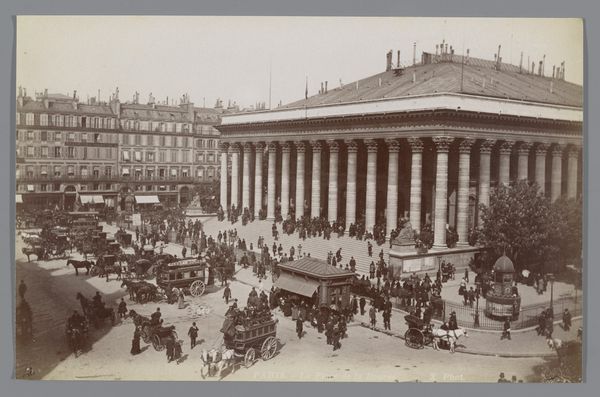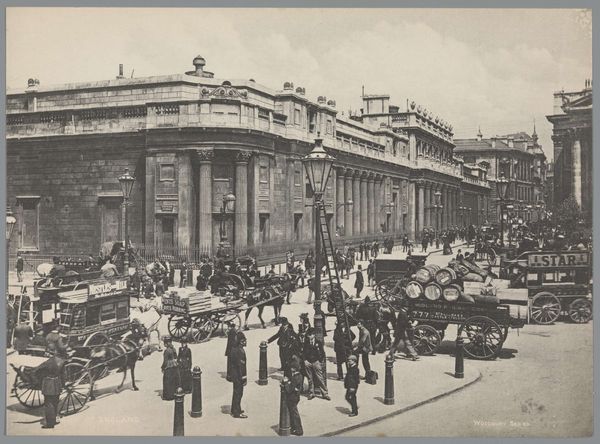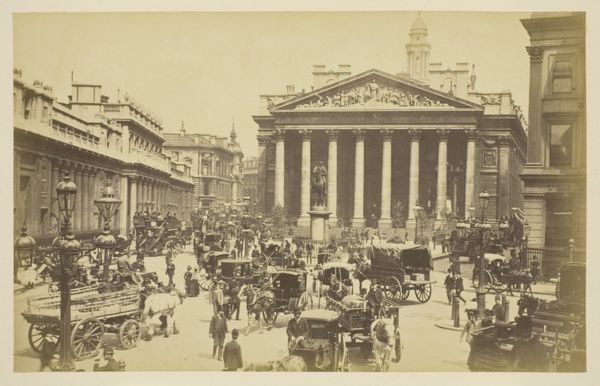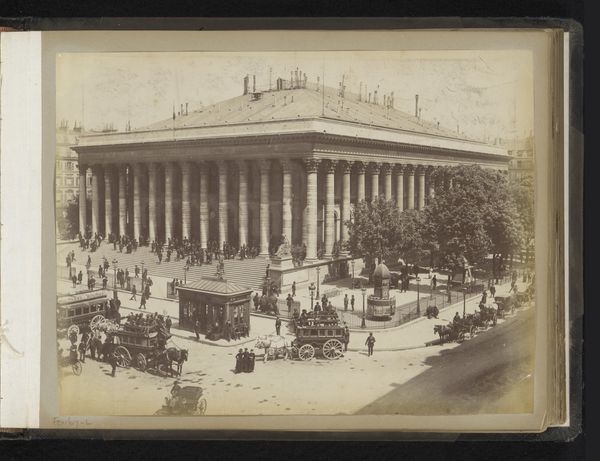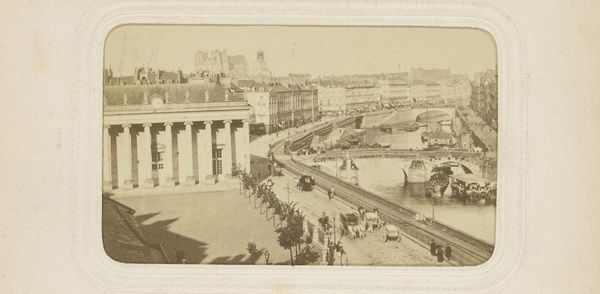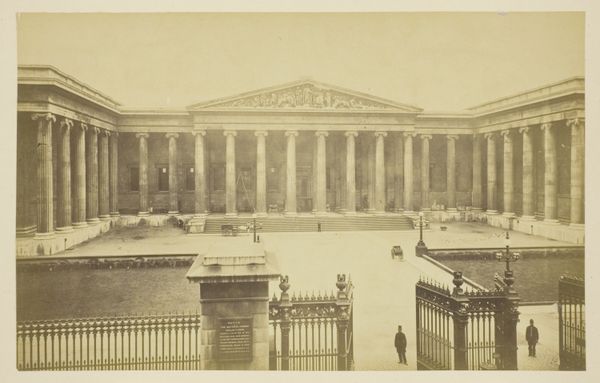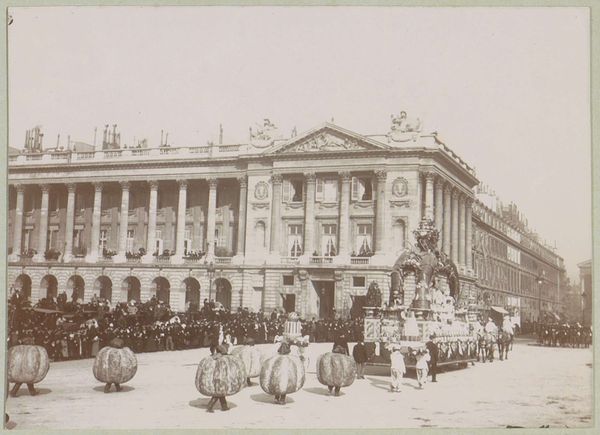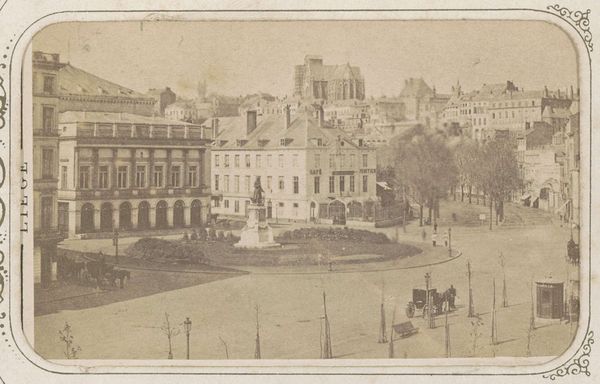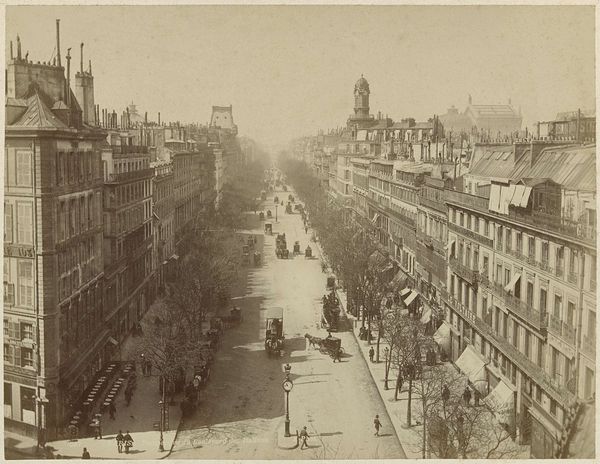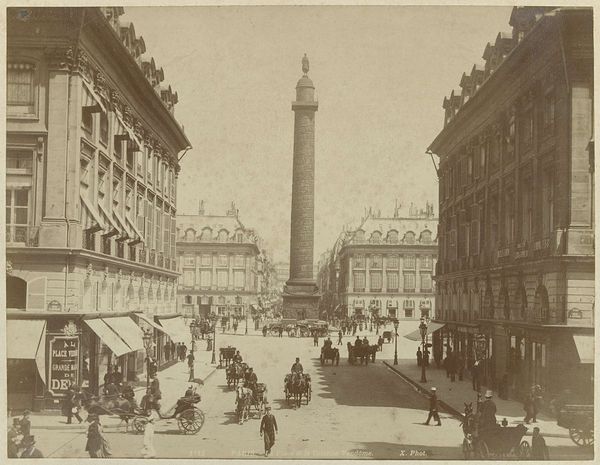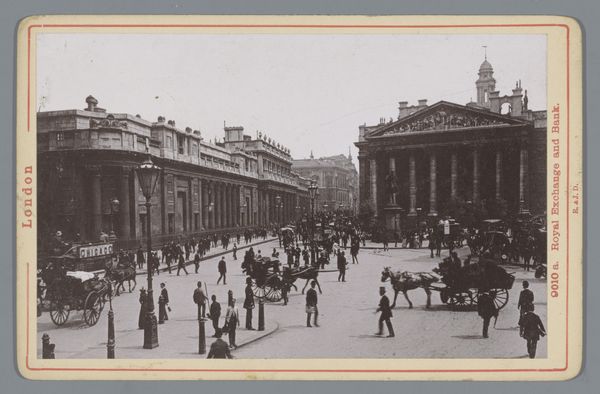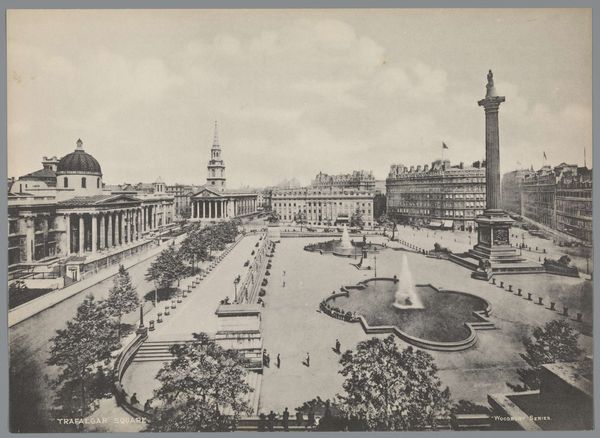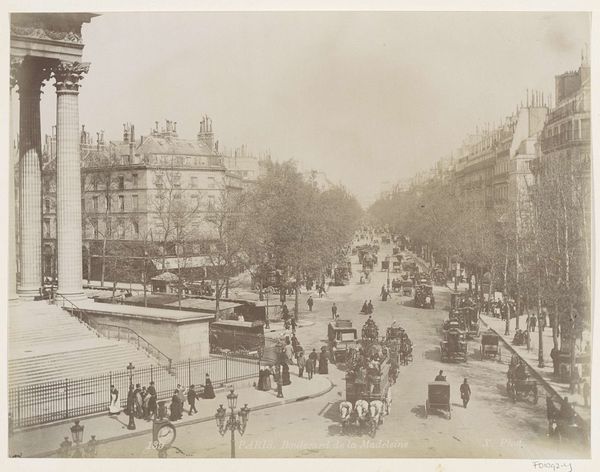
Dimensions: height 212 mm, width 277 mm, height 315 mm, width 392 mm
Copyright: Rijks Museum: Open Domain
Editor: Here we have a photograph entitled "Gezicht op het Place de la Bourse te Parijs," placing us in Paris between 1887 and 1900. The sepia tone gives it such a removed, historical feeling, like looking into a different world. What jumps out at you when you look at it? Curator: What strikes me is the intentional contrast between the grand, Neoclassical architecture of the Bourse – a symbol of burgeoning capitalist power – and the chaotic, bustling street life unfolding before it. Consider how the photographer frames this scene. What’s emphasized? Editor: I see so many horse-drawn carriages! It looks busy and important. Curator: Exactly. The image captures a moment of transition. The imposing Bourse represents established financial systems, while the flurry of activity hints at the accelerating pace of modern life and its impact on urban spaces. What purpose might this photographic documentation have served at the time? Editor: Maybe to show off Paris as a modern city? Or just to capture everyday life? Curator: Precisely. Think about the rise of photography itself during this period. It offered a new way to document and disseminate images of urban life, shaping perceptions of progress, and also constructing an ideal vision of civic order for public consumption, while carefully managing the visual narrative. How does knowing that change your view of the photo? Editor: It makes me see the photo less as a neutral snapshot, and more as a constructed image with its own point of view. I had never considered how deeply intertwined photography could be with politics and public image. Curator: It's a powerful medium, and understanding its social and historical context is key to unlocking its full meaning. I hadn't considered how modern that city felt. Editor: Yes, recognizing the context adds a new layer to how we engage with the work.
Comments
No comments
Be the first to comment and join the conversation on the ultimate creative platform.
